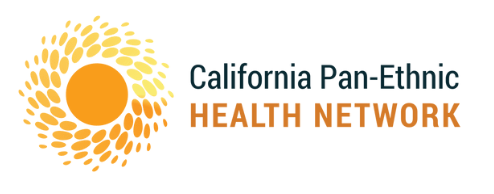Of the many factors that influence our health, some of the most difficult to address are the social determinants that are deeply ingrained in our society. In particular, racism and violence have a tremendous impact on health and wellbeing, and communities of color are disproportionately impacted. Fortunately, a lot of work is being done to make the connection between racism, violence, and public health. Earlier today, the American Public Health Association (APHA) hosted No Safety, No Health: A Conversation About Race, Place and Preventing Violence, the second webinar of their four-part series, The Impact of Racism on the Health and Well-Being of the Nation.
Today’s web forum included an engaging discussion featuring APHA Past President Linda Degutis, former director of the CDC’s National Center for Injury Prevention and Control, Howard Pinderhughes of UC San Francisco, Marc Philpart of Policy Link, and Benita Tsao of Prevention Institute. The discussion touched on a wide range of topics including the health impacts of violence and racism, trauma-informed interventions, improving the built environment, shaping positive narratives, and how public health can play a pivotal role in engaging communities for violence prevention.
Here are some of the highlights:
Degutis focused on some of the health impacts of violence.
"More people in the US die as a result of violence than car accidents." –@Degutislc, Defense Health Horizons. #APHAwebinar
— California Endowment (@CalEndow) August 4, 2015
Linda Degutis on #aphawebinar: Children exposed to violence have greater risk of obesity and chronic disease
— CPEHN (@CPEHN) August 4, 2015
Violence tends to kill people earlier in life than most causes of death. One of leading causes of death for young people #aphawebinar
— CPEHN (@CPEHN) August 4, 2015
For more information on leading causes of death, you can check this searchable resource.
Tsao touched on how racism plays a role in public health and what are some of the community risk factors when it comes to violence.
"Racism is a public health issue… Differences in neighborhoods = differences in life outcomes." #APHAwebinar
— Kelley Chunn (@KelleyChunn) August 4, 2015
http://twitter.com/ahealthydesign/status/628628946473451520
#APHAwebinar @BBTsao speaks on institutionalized racism and its effects on different social determinants of health among people of color.
— S Lawrence (@SLawrenceMPH) August 4, 2015
She also shared this Prevention Institute resource that has more on making the connection between violence and health equity.
Pinderhughes discussed his work developing and implementing trauma-informed approaches to violence reduction in at-risk communities. He also mentioned how the media contributes to negative narratives in these communities and how law enforcement strategies can create further instability.
Community trauma is a new concept we must understand to address and reduce violence. #aphawebinar
— CPEHN (@CPEHN) August 4, 2015
Howard: Community trauma. This is not just the aggregate individual violence or interpersonal but also structural violence. #APHAwebinar
— Monica McLemore PhD, MPH, RN, FAAN #OnSabbatical (@mclemoremr) August 4, 2015
"Young people in urban nbhoods experiencing persistent or chronic traumatic stress. They go to too many funerals" Pinderhughes #APHAwebinar
— UNITY (@UNITYinitiative) August 4, 2015
Media promotes social norms that become prevalent in high risk areas. Makes it harder to promote positive social norms. #aphawebinar
— CPEHN (@CPEHN) August 4, 2015
#aphawebinar Communities feel they are over-policed and under-protected. #brokenwindows
— Jenn Haussler Garing (@JennGaring) August 4, 2015
You can also read more about Pinderhughes and his trauma-informed work in this publication from Prevention Institute.
Philpart discussed PolicyLink’s work on the Alliance for Boys and Men of Color, which includes a number of advocacy organizations (including CPEHN) and works to improve the health and wellbeing of this particularly vulnerable population. He also noted that a focus on policy and broader systems change can create sustainable improvement.
Philpart: @allianceforbmoc works to improve health and opportunity for CA's boys and men of color pic.twitter.com/xmAt9IRw2t
— CPEHN (@CPEHN) August 4, 2015
What we're doing in CA is pretty special. Statewide coalition of stakeholders in the work for boys & men of color. – @mphilpart #APHAwebinar
— California Endowment (@CalEndow) August 4, 2015
Philpart: We have to think holistically to make sure comms of color opportunity from cradle to career #aphawebinar Change policing tactics.
— CPEHN (@CPEHN) August 4, 2015
One of the main takeaways from the webinar is that racism and violence are pressing public health issues and public health agencies and advocates are uniquely positioned to develop comprehensive approaches to community safety. The audio of the event will be posted on APHA’s website, where you can also register for the next webinar in the series, Unequal Treatment: Disparities in Access, Quality and Care, on August 25th.
